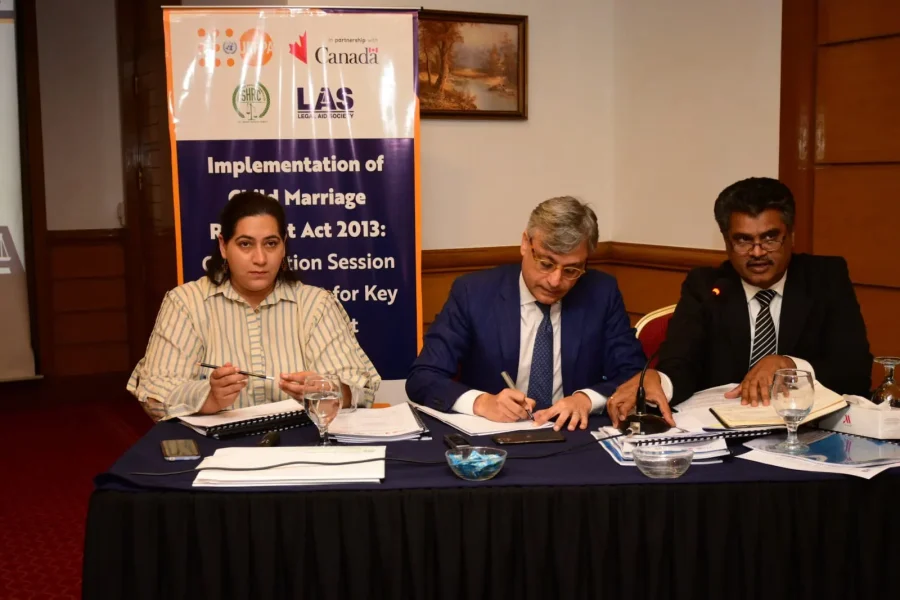The Sindh Human Rights Commission (SHRC) partnered with the Legal Aid Society for a consultation with relevant administrative depts to address the issue of child marriage, and to discuss a comprehensive plan for its eradication. The collaborative consultation, led by the caretaker minister for Law, Parliamentary Affairs, and Religious Affairs in Sindh, brought together key departments and stakeholders to craft strategies for eliminating child marriage. Statistics show that nearly 31% of marriages in Pakistan involve at least one spouse below 18, with rural Sindh having higher rates than urban areas, especially among girls under 16.
Child marriage is complex, involving legal dimensions and deeply ingrained socio-cultural norms. Recent attention surged after the Dua Zehra case, where an underage girl from Karachi married in Punjab, sparking widespread discussion.
Its impact spans human rights violations, health risks, reproductive health issues, maternal and infant mortality, hindrances in education and employment, and economic burdens. In 2022, an actionable plan was devised based on the Sindh Child Marriage Restraint Act 2013.
This comprehensive strategy targets gaps via primary prevention, secondary responses, and tertiary interventions across multiple departments. It specifies governmental roles for effective law implementation. Additionally, the SHRC and Legal Aid Society crafted department-specific roadmaps for Law, Parliamentary Affairs, Criminal Prosecution, Education, Health, and Social Welfare.
These roadmaps empower law enforcement in Sindh to combat child marriages, ensuring a safer environment for children’s well-being. Iqbal Ahmed Detho, Chairperson of the Sindh Human Rights Commission, emphasized the commission’s mandate. He pointed out that child marriage is more than just poverty—it’s a cultural and behavioral issue. He called for better district-level data on Registrars, stressed institutional capacity building, and highlighted the importance of aligning with local government initiatives. To address Act deficiencies, he proposed revisiting it, focusing on consent and registration gaps.Ms. Maliha Zia, from the Legal Aid Society, outlined their act implementation framework, highlighting challenges like cases settling outside court. She emphasized measuring child marriage cases comprehensively and LAS’s role in ensuring human security and supporting government initiatives. Addressing high mortality rates, she stressed education, especially for out-of-school children, and engaging men to redefine masculinity against child marriage. She recommended establishing rules for Nikkahkhwans, launching media campaigns, and conducting a needs assessment survey with the support Child Protection Authority.









